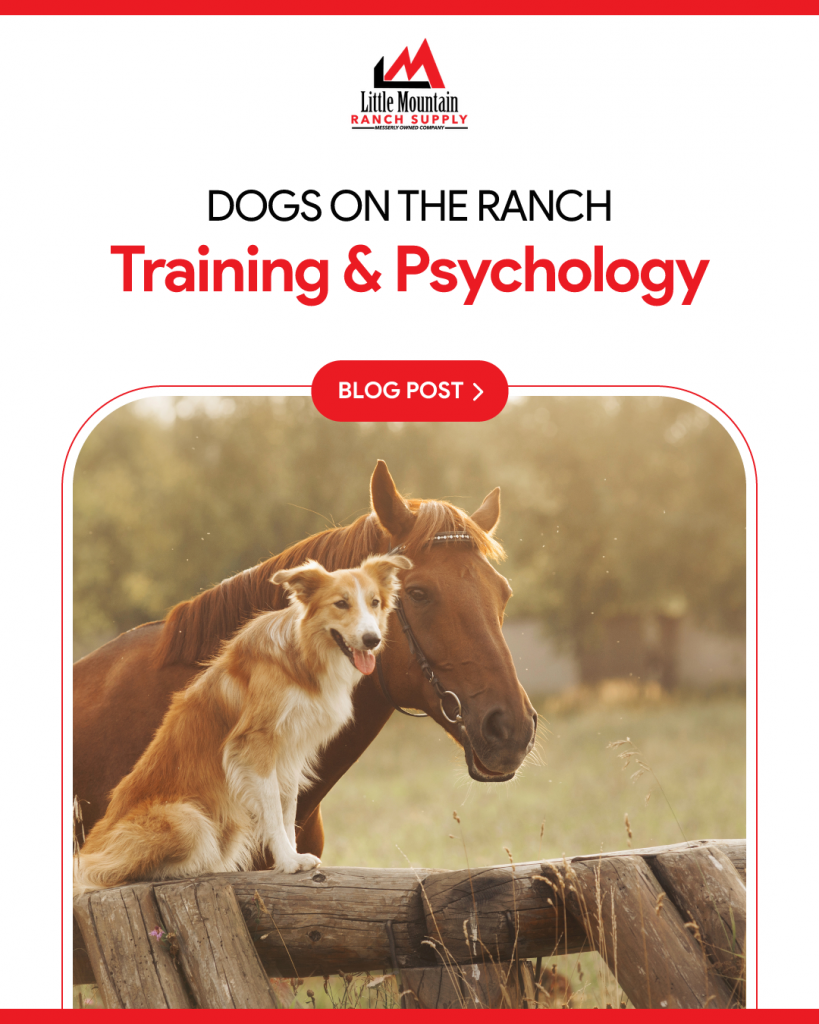Dog Training & Psychology: Unlocking Your Dog’s Full Potential

Understanding Your Dog’s Mind: Why Training is More Than Just Commands
Dog training isn’t just about teaching commands—it’s about understanding canine psychology and communicating effectively with your dog. Whether you’re dealing with leash pulling, excessive barking, or stubborn behavior, the key to success lies in knowing how your dog thinks.
At LM Ranch Supply, we don’t just provide top-tier dog products—we help you build a stronger bond with your dog through science-backed training techniques. Let’s dive into the psychology behind training, common mistakes to avoid, and how to get real results with any breed.
The Psychology of Dog Training: How Dogs Learn
Dogs don’t process information like humans. They live in the moment, respond to patterns, and learn through associations and rewards.
1. Classical Conditioning: The Pavlovian Effect
Ever noticed how your dog gets excited when you grab the leash? That’s classical conditioning in action—associating one event with another.
💡 Training Tip:
Use this principle to your advantage! If your dog fears the vet, start associating the vet with positive experiences, like giving their favorite treat every time you drive by the clinic.
2. Operant Conditioning: The Science of Reward & Consequence
Dogs repeat behaviors that get rewarded and avoid behaviors that lead to negative outcomes.
✅ Positive Reinforcement (Best Training Method) – Reward good behaviors with treats, praise, or play.
❌ Negative Punishment – Remove a reward when your dog misbehaves (e.g., stop petting if they jump).
🔄 Consistency is Key! Dogs thrive on clear patterns—if you allow bad behavior sometimes, they’ll stay confused.
🔥 Pro Training Hack: Mark good behavior immediately (use a clicker or say “YES”) so your dog understands exactly what they did right.
Common Dog Training Mistakes (And How to Fix Them!)
Even experienced owners make training mistakes that confuse their dogs. Here’s what to watch out for:
❌ Mistake #1: Repeating Commands Too Much
Saying “sit, sit, SIT!” over and over doesn’t help—your dog tunes you out.
✅ Fix: Say the command once and use a treat, hand signal, or guidance to reinforce it.
❌ Mistake #2: Rewarding Bad Behavior Without Realizing It
Many owners accidentally reinforce bad behavior (e.g., picking up a barking dog, petting them when they jump).
✅ Fix: Only reward calm behavior. If your dog barks for attention, ignore them until they’re quiet—then reward silence.
❌ Mistake #3: Inconsistent Training
Dogs need structure! If you let them on the couch today and yell at them tomorrow, they won’t understand the rule.
✅ Fix: Set clear, consistent boundaries that everyone in your household follows.
Breaking Down Common Training Problems (And How to Solve Them!)
1. Leash Pulling: Teaching Loose-Leash Walking
🐕 Does your dog drag you down the street? Leash pulling is one of the most common issues owners face.
Why it Happens:
• Dogs naturally walk faster than humans.
• They’ve learned that pulling = faster movement.
🔥 Solution:
1. Stop moving every time your dog pulls. They’ll quickly learn that pulling stops progress.
2. Reward when the leash is loose—reinforce calm walking with treats.
3. Use a front-clip harness for better control.
👉 Best Training Tool: No-Pull Harness + Traffic Leash
2. Excessive Barking: Teaching “Quiet” on Command
🐶 Does your dog bark non-stop at the window or door?
Why it Happens:
• Boredom, anxiety, or territorial behavior can all trigger excessive barking.
🔥 Solution:
1. Teach “Speak” first—yes, really! Once your dog learns to bark on command, it’s easier to teach “Quiet.”
2. Use a calm, firm voice (never yell—it sounds like barking to them).
3. Reward silence—as soon as they stop barking, say “quiet” and give a treat.
👉 Best Training Tool: Interactive Puzzle Toys (keeps dogs mentally stimulated so they bark less).
3. Jumping on People: Teaching Polite Greetings
🐕 Does your dog launch themselves at visitors?
Why it Happens:
• Dogs greet each other face-to-face, so they think jumping gets them closer.
🔥 Solution:
1. Ignore jumping behavior (turn away, no eye contact).
2. Reward sitting—only give attention when their paws are on the ground.
3. Teach an alternative behavior (like sitting before being petted).
👉 Best Training Tool: High-Value Training Treats for Rewarding Calm Behavior.
Dog Psychology 101: Understanding Your Dog’s Needs
1. Physical Exercise vs. Mental Stimulation
Many dogs act out not because they’re bad—but because they’re bored!
💡 Training Tip: Combine physical exercise (long walks, agility training) with mental enrichment (puzzle toys, scent work).
2. The Power of Routine in Training
Dogs love predictability—they feel secure when they know what to expect.
✅ Keep a routine:
• Feeding times should be consistent.
• Walks & playtime should follow a schedule.
• Training sessions should be short & positive (5-10 minutes, 2-3 times a day).
🔥 Pro Tip: Training is more effective when dogs are slightly hungry—use mealtime for reinforcement!
Final Thoughts: Training is an Investment in Your Dog’s Future
Dog training isn’t just about obedience—it’s about building trust, reducing frustration, and creating a happy, well-balanced dog.
✔ Use science-backed methods like positive reinforcement for lasting results.
✔ Be patient and consistent—dogs don’t learn overnight!
✔ Equip yourself with the right tools—harnesses, treats, and mental stimulation toys make all the difference.
🐾 At LM Ranch Supply, we provide the best training tools & expert guidance to help your dog thrive.
📍 Visit us in-store or online for expert-recommended dog training gear today!

